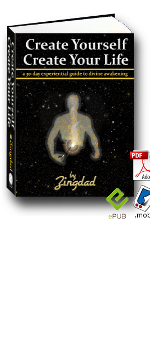Doing What Works
Clear and Pure Drinking Water
Clean air to breath is the most important thing for your body. Clean and pure drinking water is the second. And this is what I will address in this post.
Of course you can rely on others to provide you with your clean water. For most people this will be the most logical and practical thing to do. If your tap water is good quality and if it is not fluoridated then that might be good enough. Buying bottled water probably ensures that what you are ingesting is of a good standard... but all of those plastic bottles are not very kind to the environment.
Not everyone can do as I do as not everyone lives as I do. But for those that are interested I'd like to share what I have found to work with regards to getting the cleanest and purest drinking water that I can. This information might also be useful to those who like to prep for emergencies and those that like to spend time in the wilds.
Obviously one needs to start with water as clean as you can get. If one does not live where the air is polluted then rainwater is ideal. But how are you going to collect the rainwater in an significant quantities? The obvious choice is to harvest it from the roof of your house. The problem here is that even the purest rainwater will collect leaves, dust and bird poop from the roof.
For this reason I use a rainhead to clean what comes in off the roof. This is a very simple, yet ingenious device. Large items like leaves and twigs are thrown off an angled grate. And smaller particulate matter is flushed: the rainhead discards the first 20 litres which contains almost all the impurities. After that, the water that goes to the holding tanks is really very clean.
But micro-organisms will even grow in distilled water. One must be aware of this. So it is an inevitability that micro-organisms will grow and live in the collection tanks. The warmer it is the faster they’ll grow. Most of these will almost certainly be harmless but it is possible some many not. And even if they are fine, they may cause off tastes in the water. For these reasons, it is important to regularly disinfect the water.
There are many ways to do this. The easiest and cheapest way I have found is by using dry granular Calcium Hypochlorite. This is the stuff sold in your pool store as “shock” or perhaps “shock it” or “pool shock”. It’s cheap, it stores well and a little goes a very long way.
How much should you use?
According to the EPA the target is 4 ppm (4 parts of chlorine per each million parts of water). This means you want to put 4 grams of pure chlorine in a thousand litres of water. For my friends in the US this is about half an ounce of pure chlorine in a thousand gallons of water. But what you get from the pool shop is not pure chlorine (that’s a gas). The dry granule is Calcium Hypochlorite which is about 65% active chlorine. If we take this into consideration then you need:
5.5 grams of granules to 1000 litres of water
OR
0.734396 ounces (which is 4½ teaspoons) of granules in 1000 gallons of water
Did I not say a little goes a long way?
If you are working with smaller quantities of water (like water bottles and the like) you can do a dilution series. So for example you might:
1. Put 1 gram of chlorine in a litre of water (don’t drink this!!!) for your first very strong dilution (its about 65ppm). And then when it is completely dissolved…
2. You can use just 6ml of this concentrated solution in a litre of water to get your 4ppm.
I have to admit to laziness in not working out something similar in imperial units. But you get the idea, and can work it our yourself, I am sure.
If you find this confusing and are worried about getting it right you can relax a little. There is a way to be sure… just read on.
When you have dosed your water with chlorine, you must wait for 24 hours for it to work and to get to full strength. After 24 hours you should test the water with a simple test kit that you can get from the same pool shop that sold you the chlorine. You’ll quickly see if it’s too weak or too strong.
If the water was suspect to start with (perhaps a little dirty) then you should filter it as much as possible and then make sure it stands with 4ppm of chlorine for 24 hours before drinking it. If you are dosing essentially clean water “just to be sure” then you can probably allow as little as 1ppm.
If you are dosing a reservoir then you should ideally re-test once a month to make sure the residual chlorine does not drop below 1 ppm. If you have more water entering your storage (with rain, for example) you might decide it is best to boost it back up to 4 ppm.
You can use your common sense with this though. The colder it is, the less chlorine is necessary. The cleaner the water is to begin with, the less chlorine is necessary.
To give you an example: we live up in the mountains where the air is clean and pure. The rain that falls is very clean. I use a rain head so the water in my collection tanks is really very good. I would probably be fine never using any chlorine. Most of my neighbours don’t. But I like to err on the safe side so, every three months I dose the tanks to 4 ppm so that they are clean and the water that runs through the house’s pipes and the geyser etc is chlorinated. In this way I ensure that no biofilm builds up in the filters and that any nasties that might have been starting out are killed.
4ppm is the “high target”. This means you are aiming for that, but you don’t want to go over that. Chlorine is somewhat caustic. If you push the levels too high it might begin to degrade your storage container and your pipes. The water will also taste and smell of chlorine which isn’t very pleasant.
Why not just use bleach?
Some folks recommend the use of unscented household bleach for the same purpose outlined above. What’s the difference? Bleach is SODIUM hypochlorite and the dry granules are CALCIUM hypochlorite. Both are ways to deliver active chlorine. Both are fine. The real difference is that:
1. Bleach does not store well – it degrades over time. You need to replace your bleach every three months or so to maintain it’s stated active percentage. Dry chlorine, if stored in a sealed container (preferably the original container) in a, cool, dry, dark place, will last for years. If it gets contaminated with anything (liquids or other substances it can become unstable and will not only degrade quickly but might actually become unsafe. So don’t put anything other than clean, dry metal or plastic spoons into the container or preferably pour the granules out of the container into your measuring cup.
2. Bleach is usually only 3.5% to 6% active chlorine whereas the granules are about 65% active chlorine. This means you need to store a lot more “stuff” to have the same effective disinfecting agent on hand.
What about other methods of sterilization
Boiling is best, no doubt about it. But remember to make water safe you must boil it for ten minutes at a fast boil. That takes a lot of energy and is not practical for large quantities.
Other methods include running an ozone generator and pumping the bubbles through the water. This works great and leaves no residual chemicals in the water. The generators are however quite expensive and they do “wear out”. Not really suitable for single home applications.
UV sterilization is an option but doesn’t work if the water is even a little bit cloudy. Pathogens can hide behind particulate matter and make it into your drink. An inline UV sterilizer can work in a home and can be fairly cost-effective though.
What about ingesting Chlorine? Is it safe?
Everything is toxic at sufficiently high doses – even table salt will damage your health or even kill you if you managed to ingest enough of it. Even pure water will! Many things are however safe or even beneficial at low doses. Chlorine is one of those things that is safe at low dosages. Your body can cope with it just fine as it is converted to chloride ions in the stomach. Your body actually needs an amount of chloride ions for normal, healthy functioning (see http://en.wikipedia.org/wiki/Serum_chloride ) and when you have too much it is excreted by the kidneys. So it’s actually okay in the kinds or concentrations (less than 4 ppm) that we are talking about here.
And there it is! I'd love to hear from you if you have the kind of lifestyle that I do and therefore take responsibility for your own water - or if for any other reason you regularly purify water. Let me know what you do and what you have found to work.






